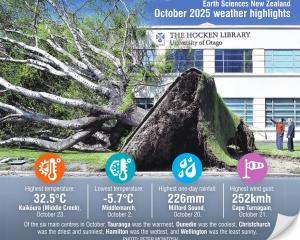NZTA Central Otago area manager John Jarvis said the flashing lights had been set up near known black spots for ice and also before tight curves.
Several had been mounted around the Kawarau Gorge and along the Lindis Pass, where there was about 6km of compressed ice on the road.
"We've used them up in the Lindis Pass and for some troublesome areas to highlight the particular problem and to make sure people slow down where we're pretty sure there is a problem.
"We put them up where approach speeds can be high and bends can be tight and particularly where there's permafrost ... there are patches in the shaded area that might not see the sun at all."
Last week, Mr Jarvis travelled through the majority of NZTA's southern network and said overall driving behaviour was good.
However, there were some drivers who were "clearly oblivious" to the conditions, for instance, driving through heavy fog without their lights on.
Police had been proactive, stopping drivers last week on State Highway 97, near Lumsden, advising of black ice at Five Rivers.
While Mr Jarvis appreciated some motorists might get frustrated at temporary lower speed limits, areas where passing lanes might be cordoned off, or other drivers travelling at slower speeds, "it's to get people through the site safely".
"Some of the gutters, the kerb and channel ... have frozen over entirely.
"Leave home earlier [or] drive later in the day, rather than racing through Central Otago first thing in the morning.
Take extreme care, really," he warned.
NZTA's annual winter maintenance budget of about $50,000, covering Kingston to Haast Pass and Raes Junction to Ranfurly, was so far "tracking normally".












